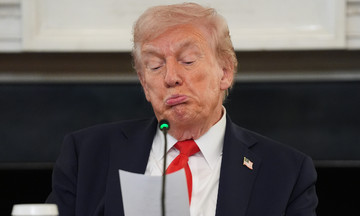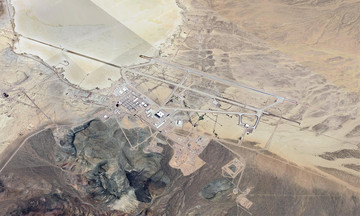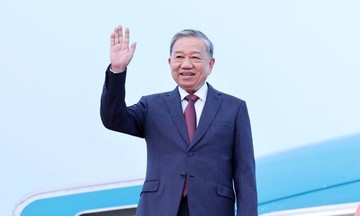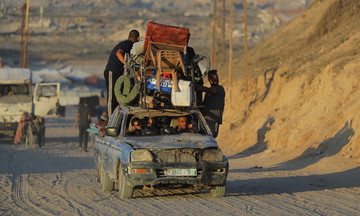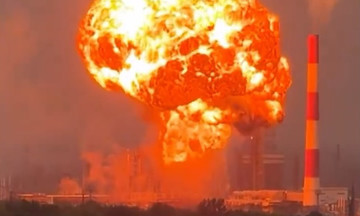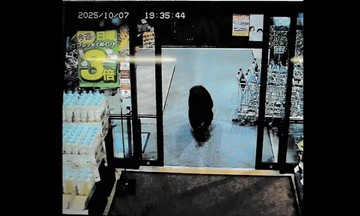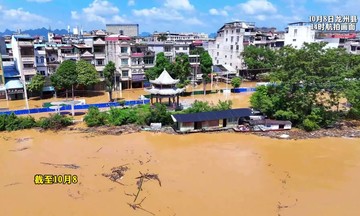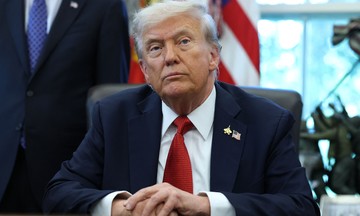The Chinese military unveiled a range of its most advanced weaponry at a parade in Beijing on 3/9, including the latest intercontinental ballistic missiles (ICBMs): the DF-61, DF-31BJ, and DF-5C.
The first Dong Feng (East Wind) missile appeared in 1958. Its designers said the name was inspired by a famous statement by Chairman Mao Zedong: "Either the East Wind prevails over the West Wind, or the West Wind prevails over the East Wind," Mao declared during a 1957 visit to the Soviet Union.
Julang (Giant Wave), the name given to submarine-launched ballistic missiles, originates from a Mao Zedong poem about the revolutionary change he envisioned for China. "Mountains! Like a giant wave surging in a violent sea, like a thousand warhorses galloping across a fierce battlefield," he wrote in 1934.
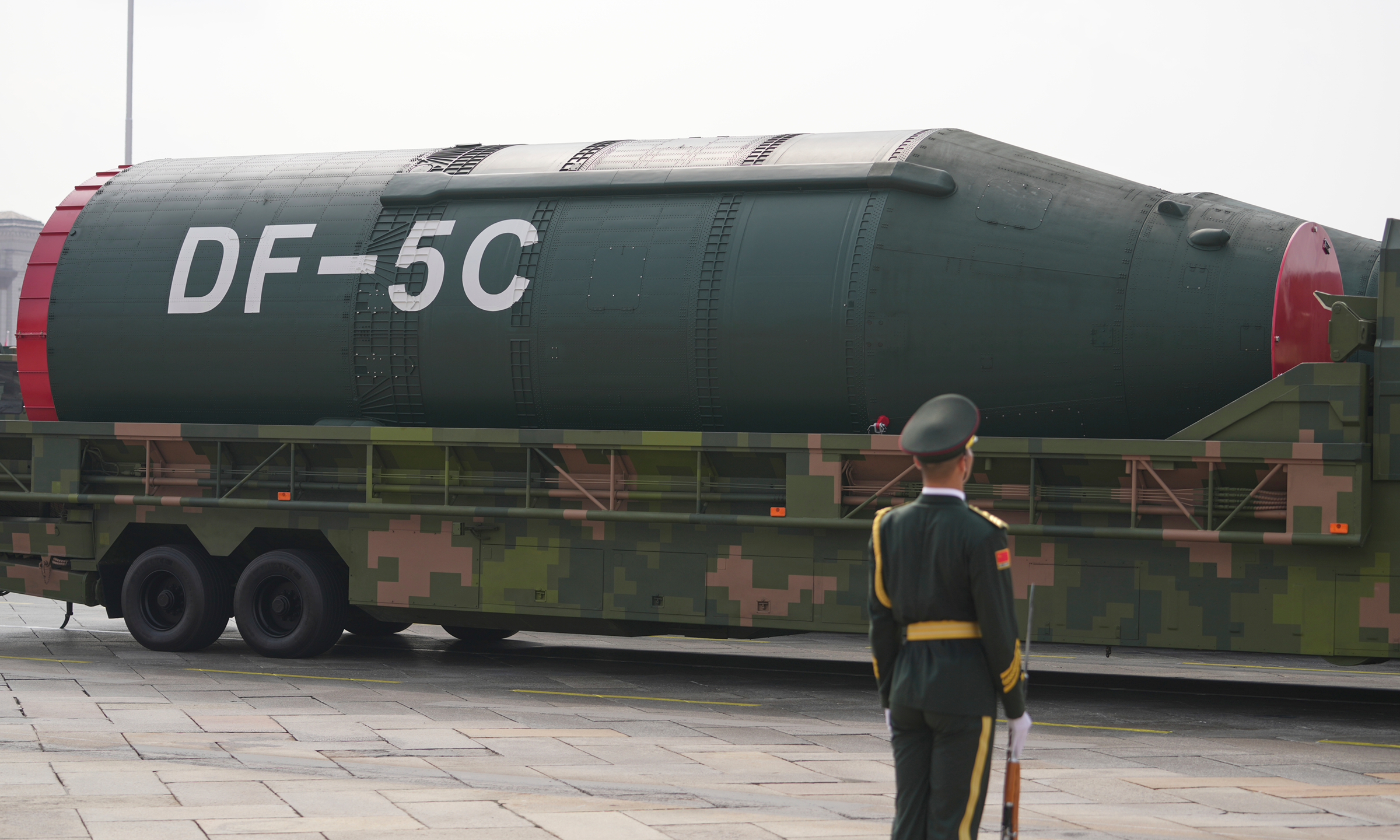 |
DF-5C missile at the Tiananmen Square parade on 3/9. Photo: AP |
DF-5C missile at the Tiananmen Square parade on 3/9. Photo: AP
Another weapon revealed at the parade was the Jinglei-1 (King Thunder-1), China's first air-launched ballistic missile. While officials didn't disclose the name's origin, the phrase "King Thunder" appeared in a 1964 poem by Mao Zedong titled "Celebrating the Success of Our First Nuclear Test."
The PL series of air-to-air missiles, short for PiLi (Thunderbolt), takes its name from the 1927 poem "Autumn Harvest Uprising," which describes the revolution led by Mao Zedong in Hunan and Jiangxi provinces. "Amidst the dark clouds of the autumn harvest, the thunderbolt of uprising has resounded," he wrote.
Among the air-to-air missiles displayed was the PL-15. The PL-15E, the export version of the PL-15, gained notoriety after reports emerged that the Pakistani air force used it to shoot down Indian fighter jets during a brief conflict in May.
The parade also marked the debut of new anti-ship missiles: the YJ-15, YJ-17, YJ-19, and YJ-20. YJ stands for Yingji (Eagle Strike), derived from a poem Mao wrote in 1925. "The eagle tears through the air, fish glide in the clear water, beneath the icy sky, millions of creatures struggle for freedom," Mao wrote.
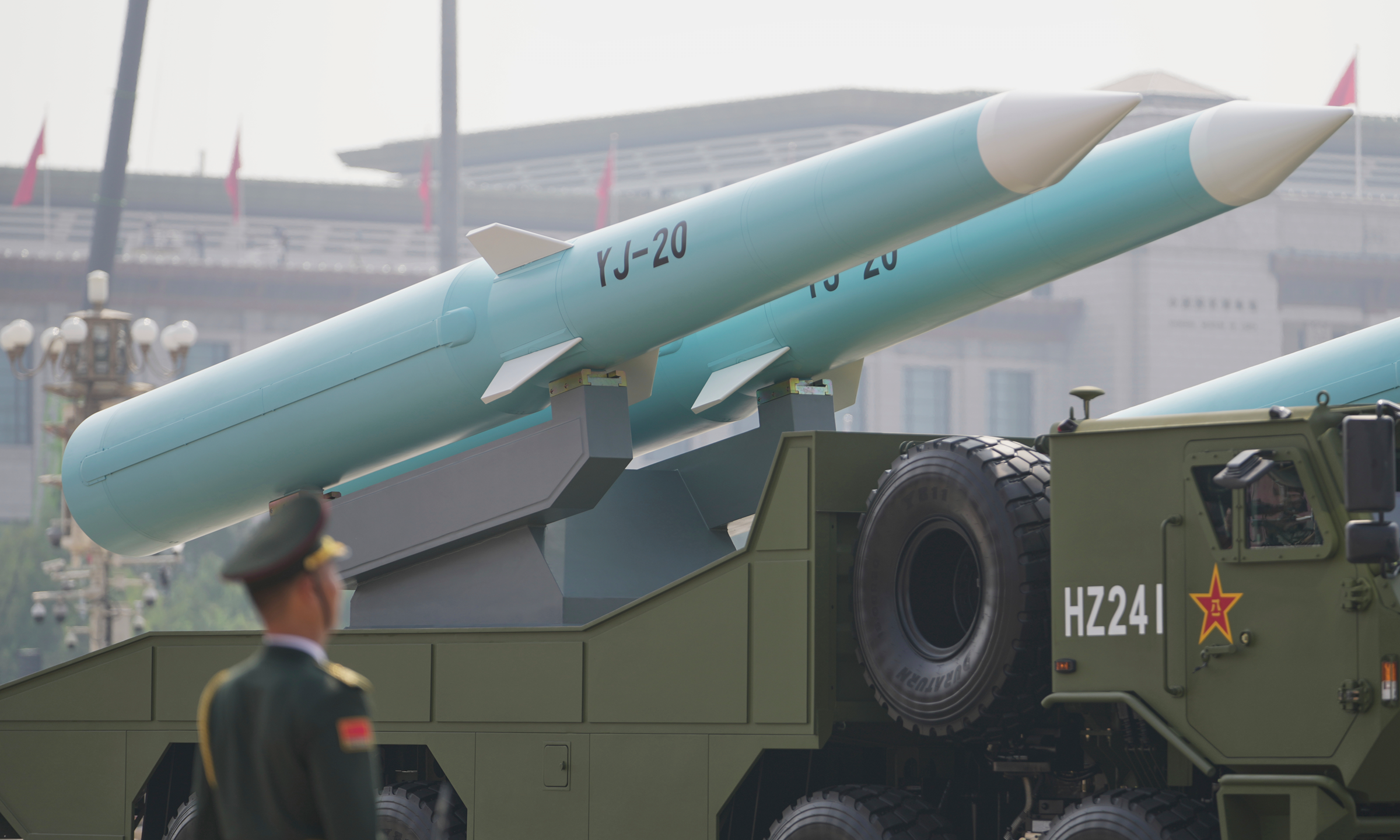 |
YJ-20 anti-ship missile at the Tiananmen Square parade on 3/9. Photo: AP |
YJ-20 anti-ship missile at the Tiananmen Square parade on 3/9. Photo: AP
The latest versions of the Hongqi (Red Flag) air defense system, including the HQ-20 and HQ-9C, were also featured.
The red flag is a powerful symbol in China. In his poetry, Mao often used the image of a red flag waving in the wind to represent the unity, determination, and resilience of the Chinese Communist Party during the revolution. One example is the poem "Mount Liupan," written after the Red Army crossed the mountain in northwest China. "On the peak of Mount Liupan, the red flag flutters in the west wind. Today, holding the long rope in hand, when will the Grey Dragon be bound?" he wrote.
Pham Giang (Sina, AFP, Reuters)




